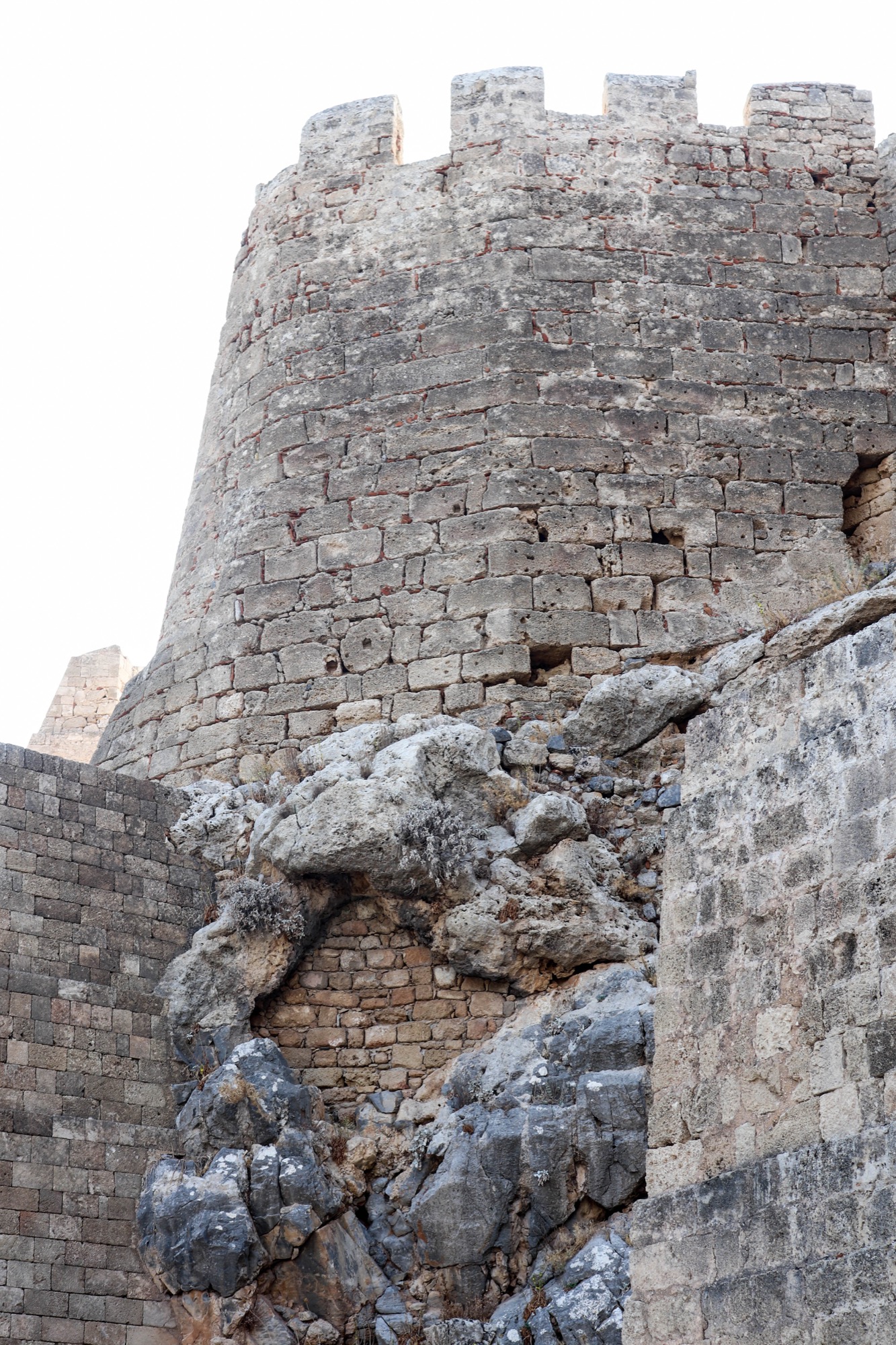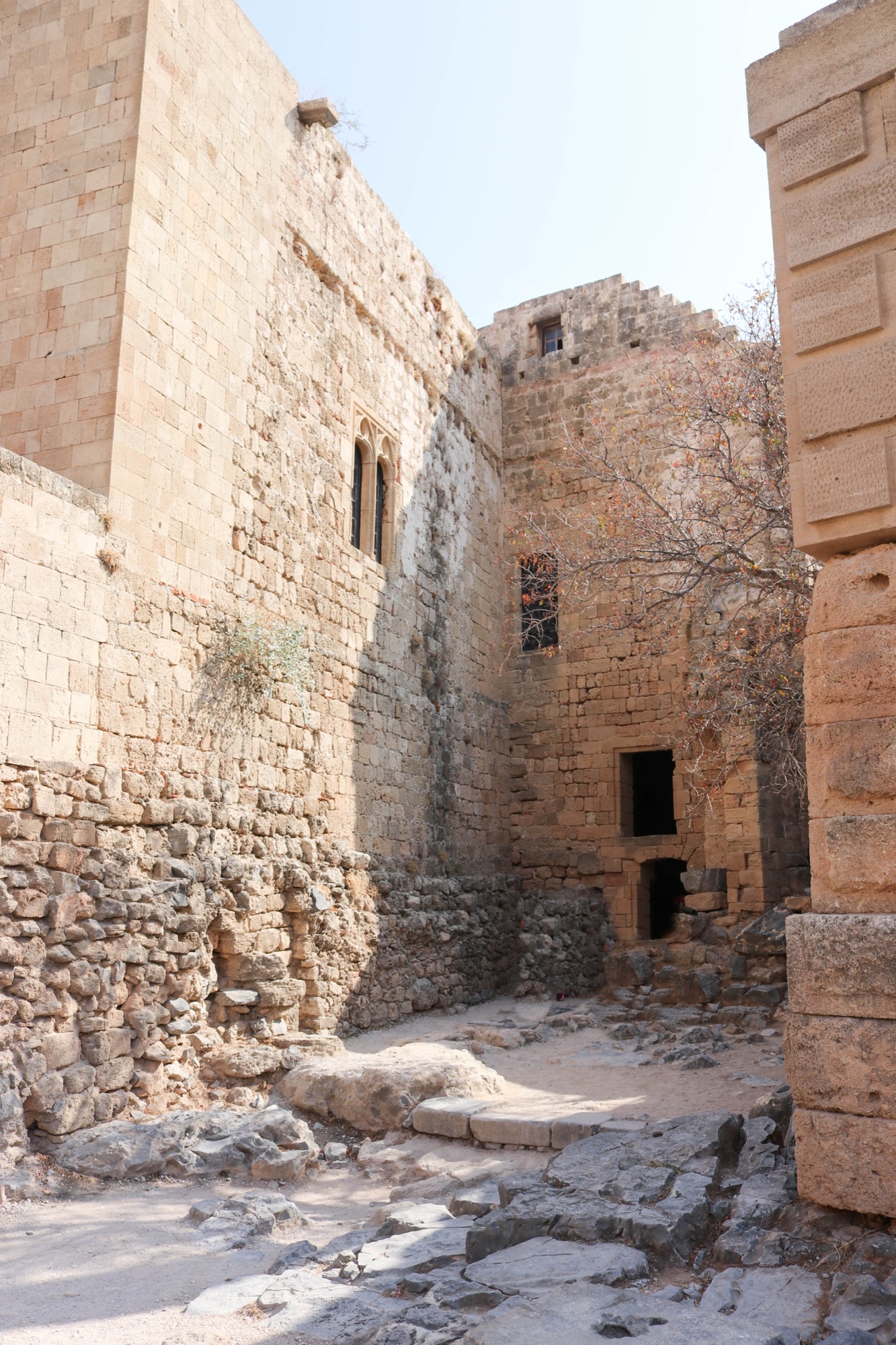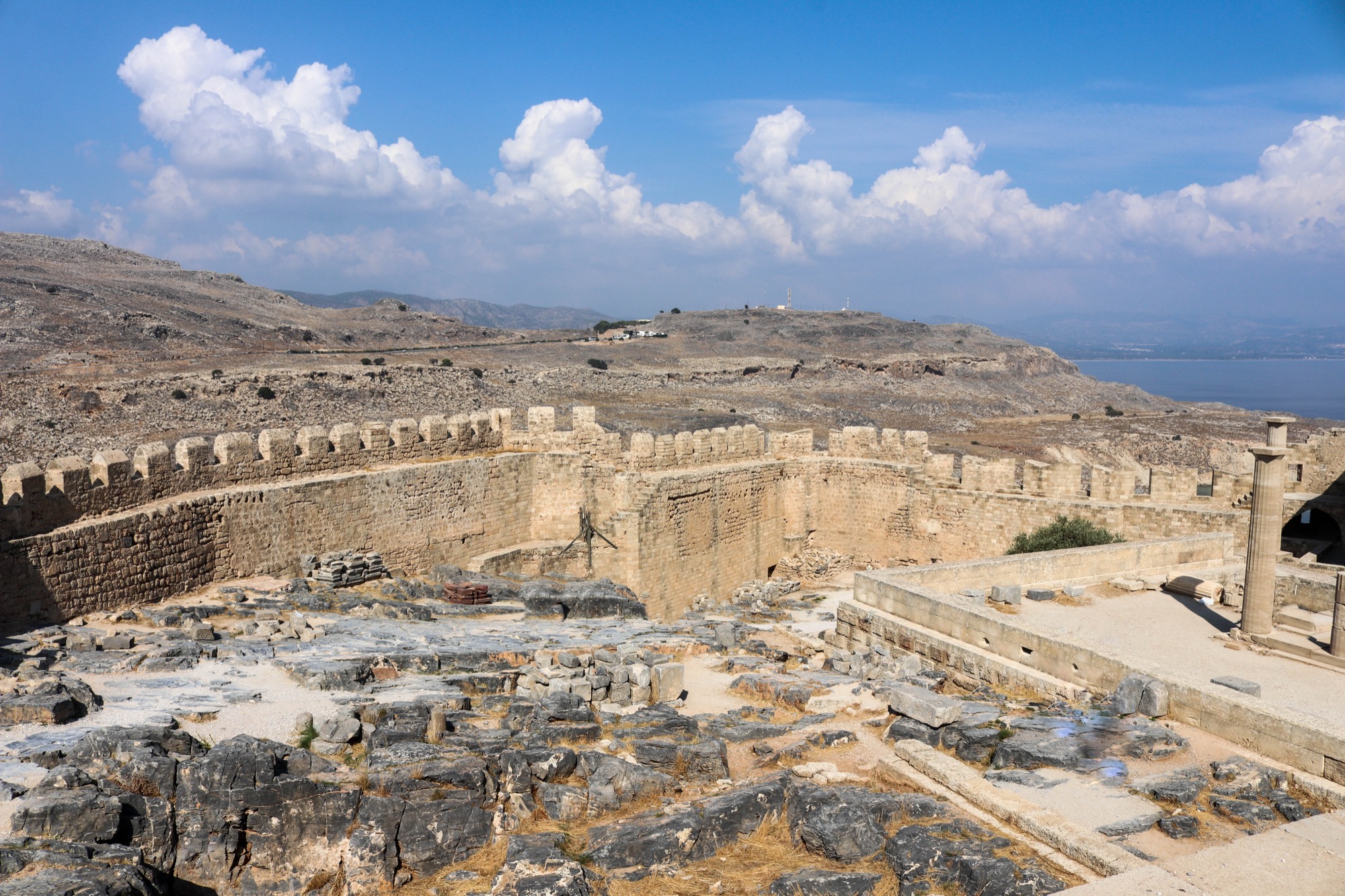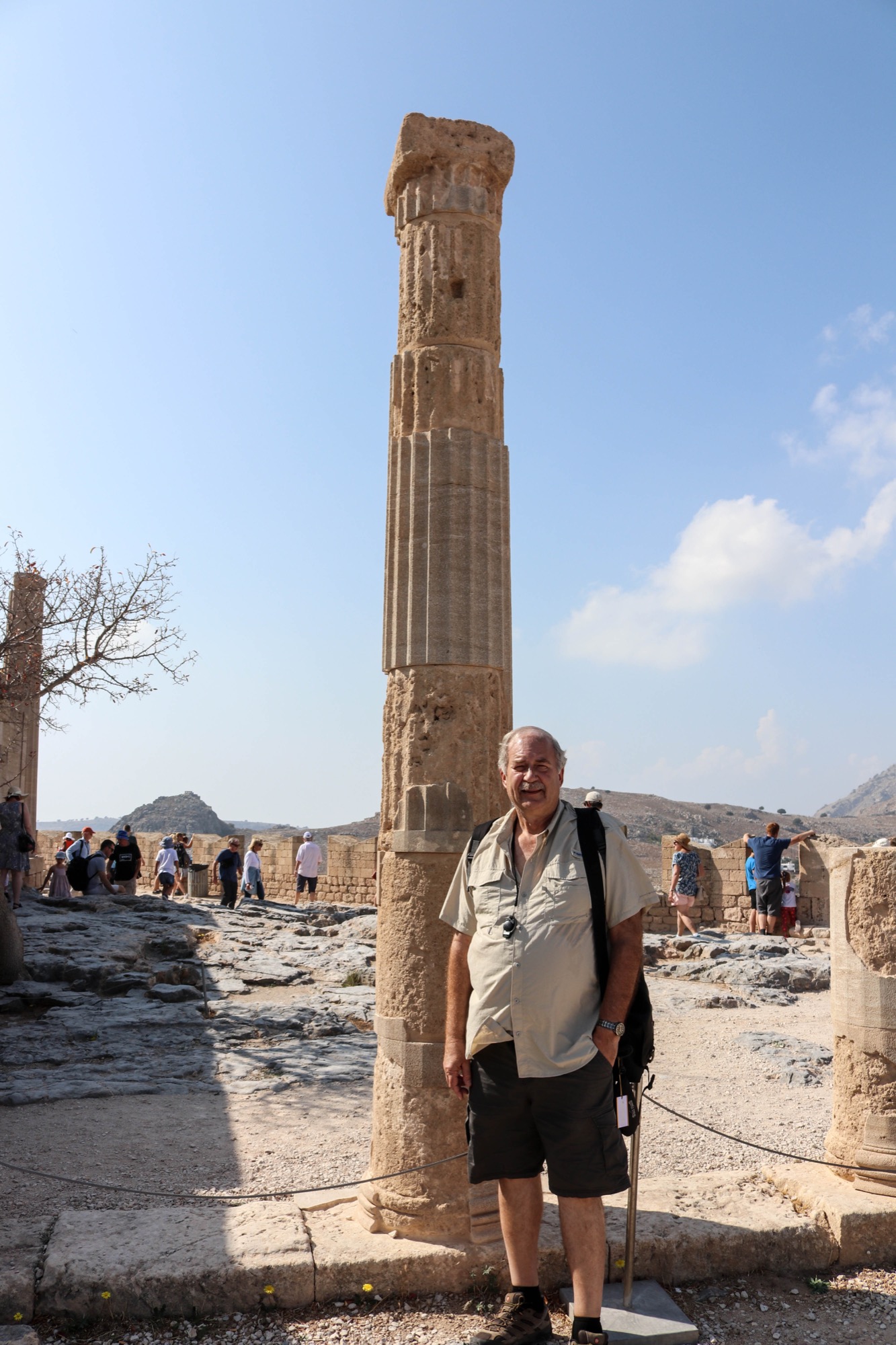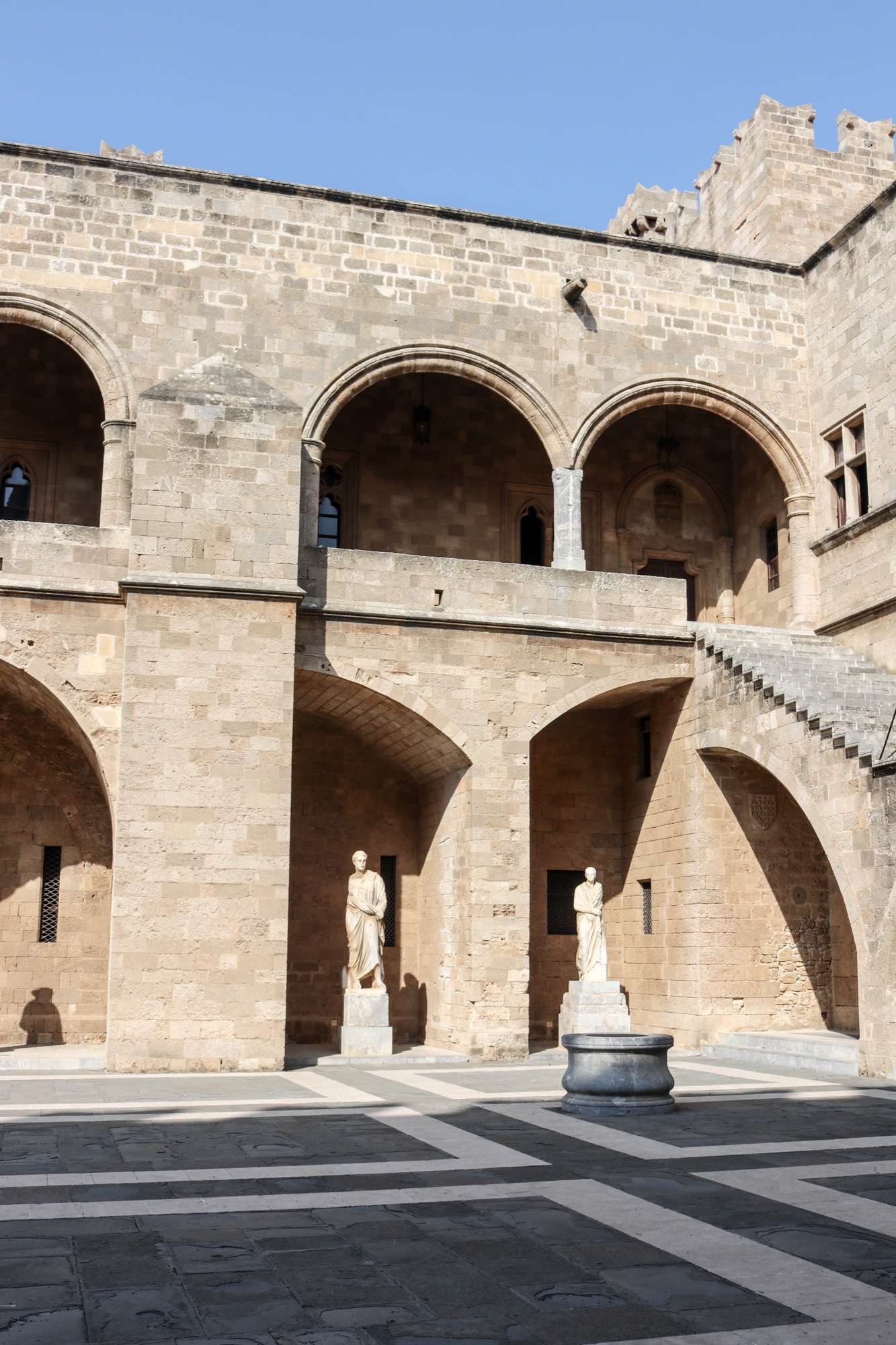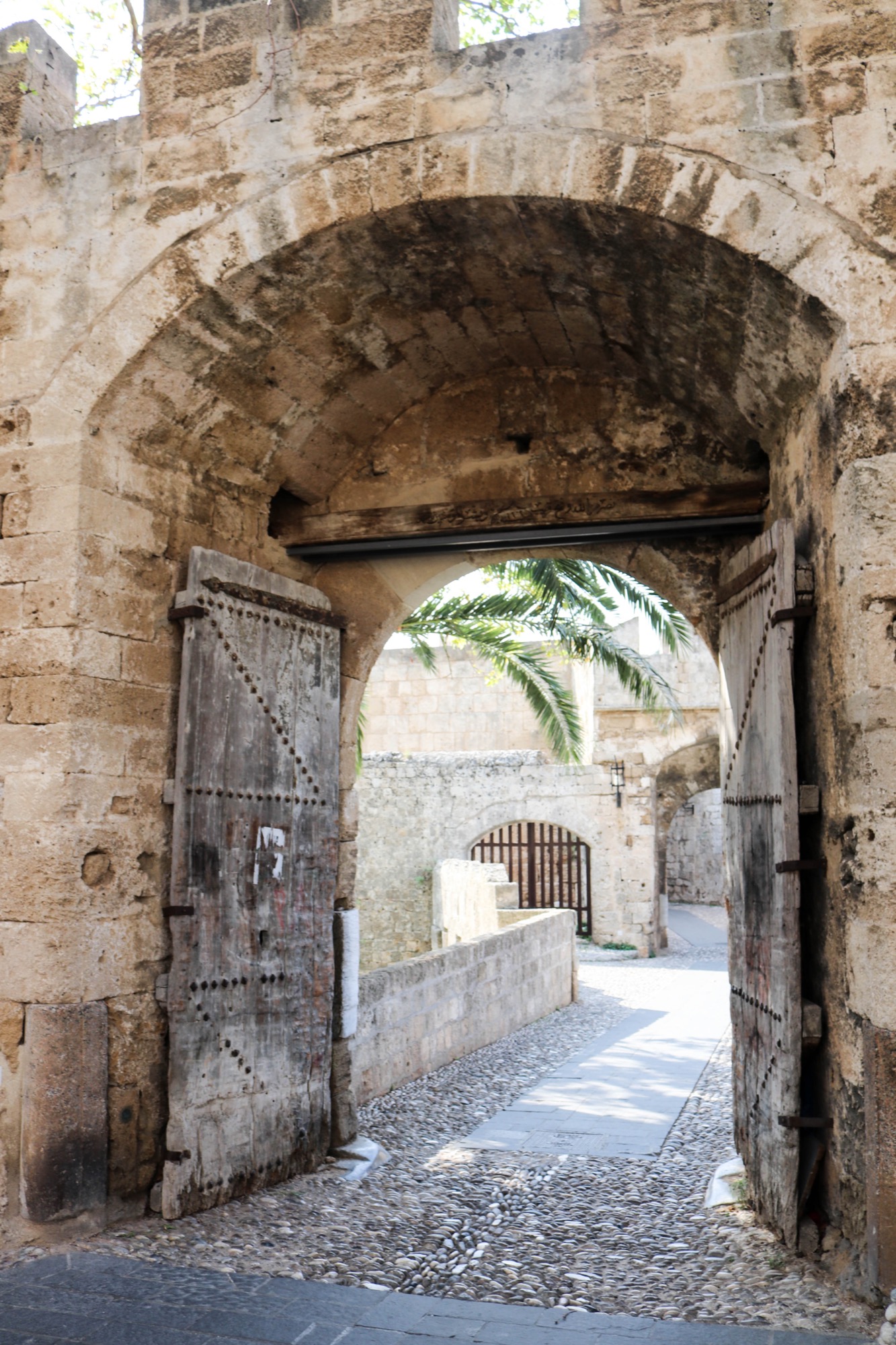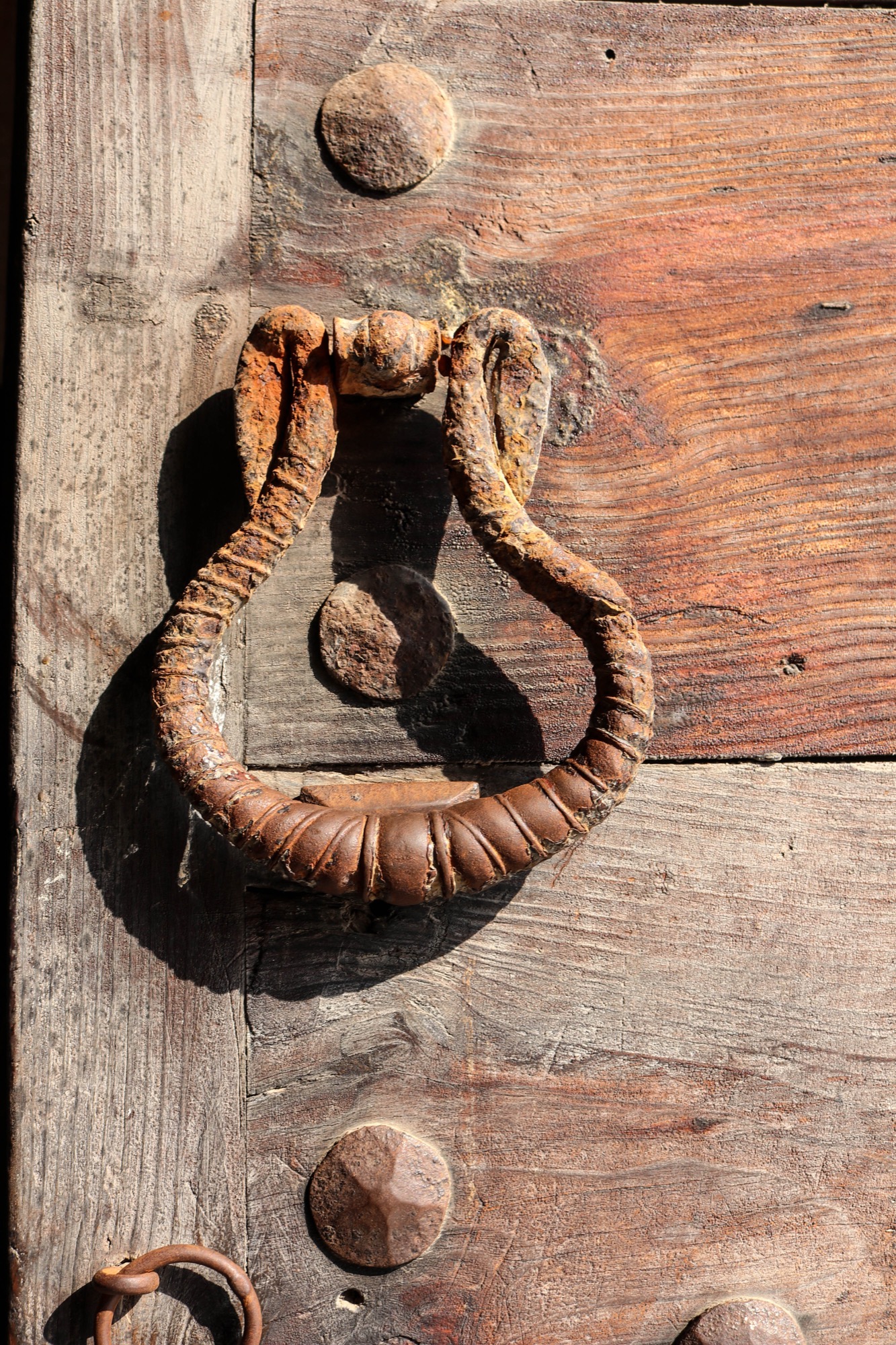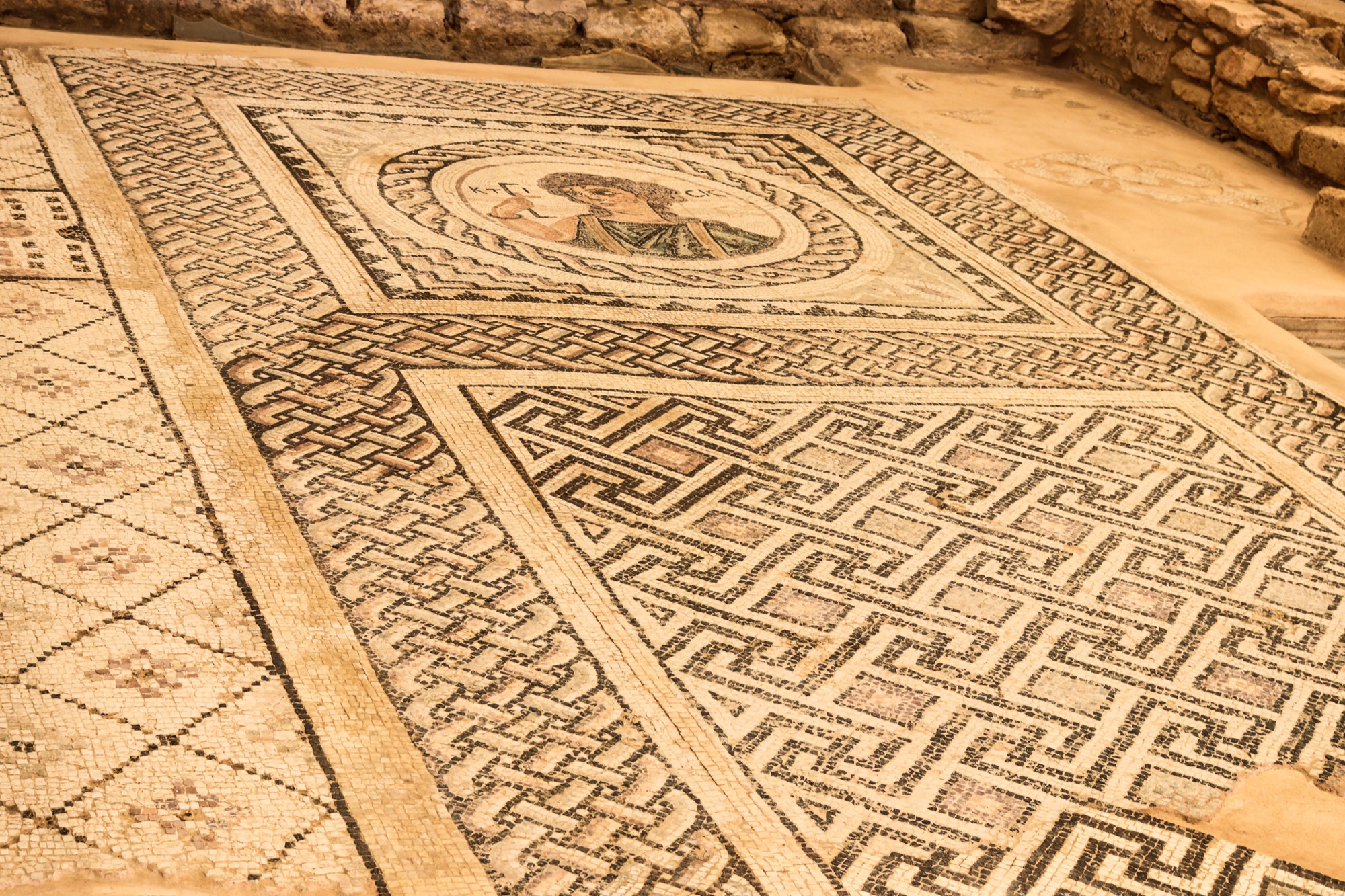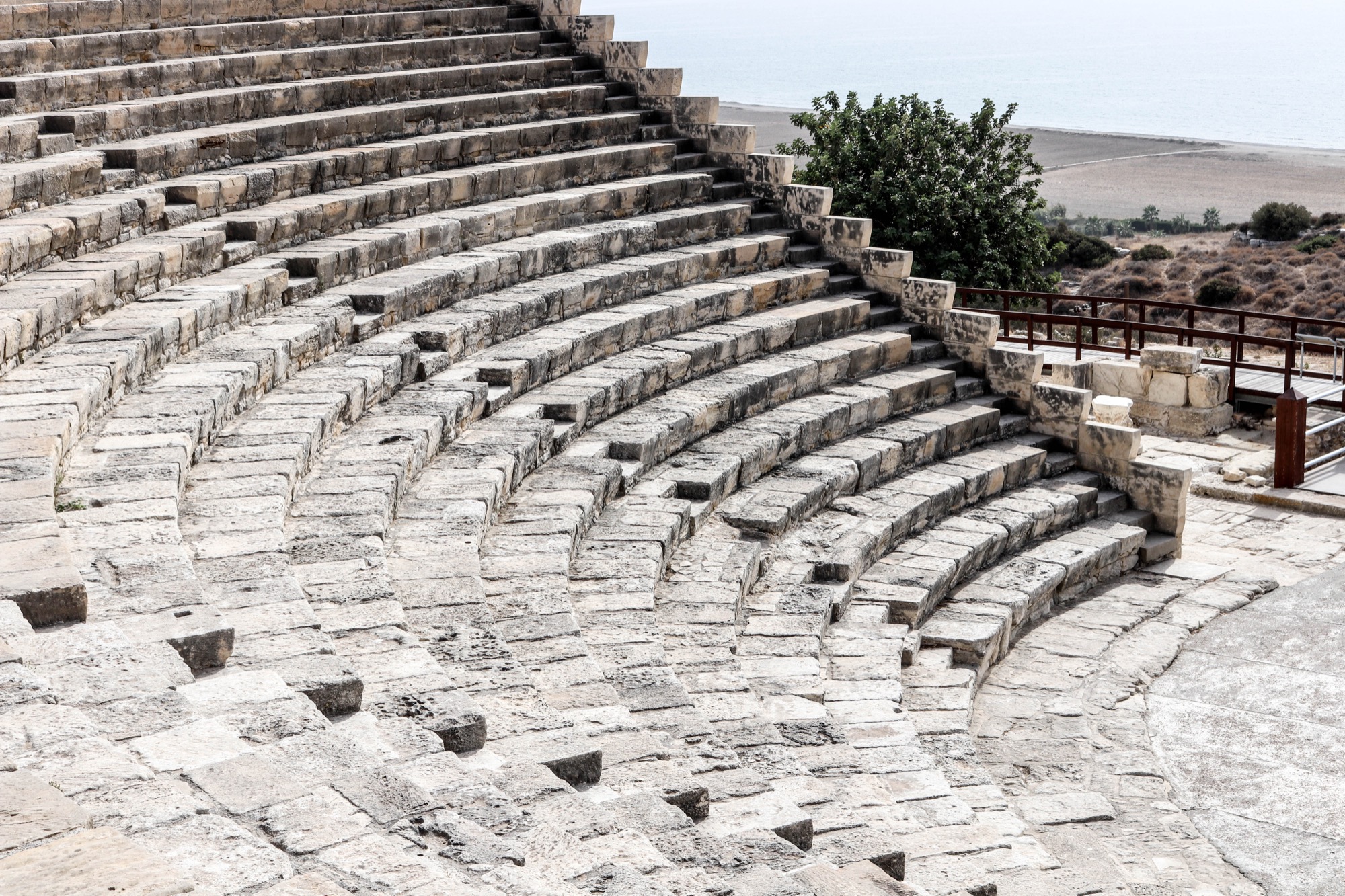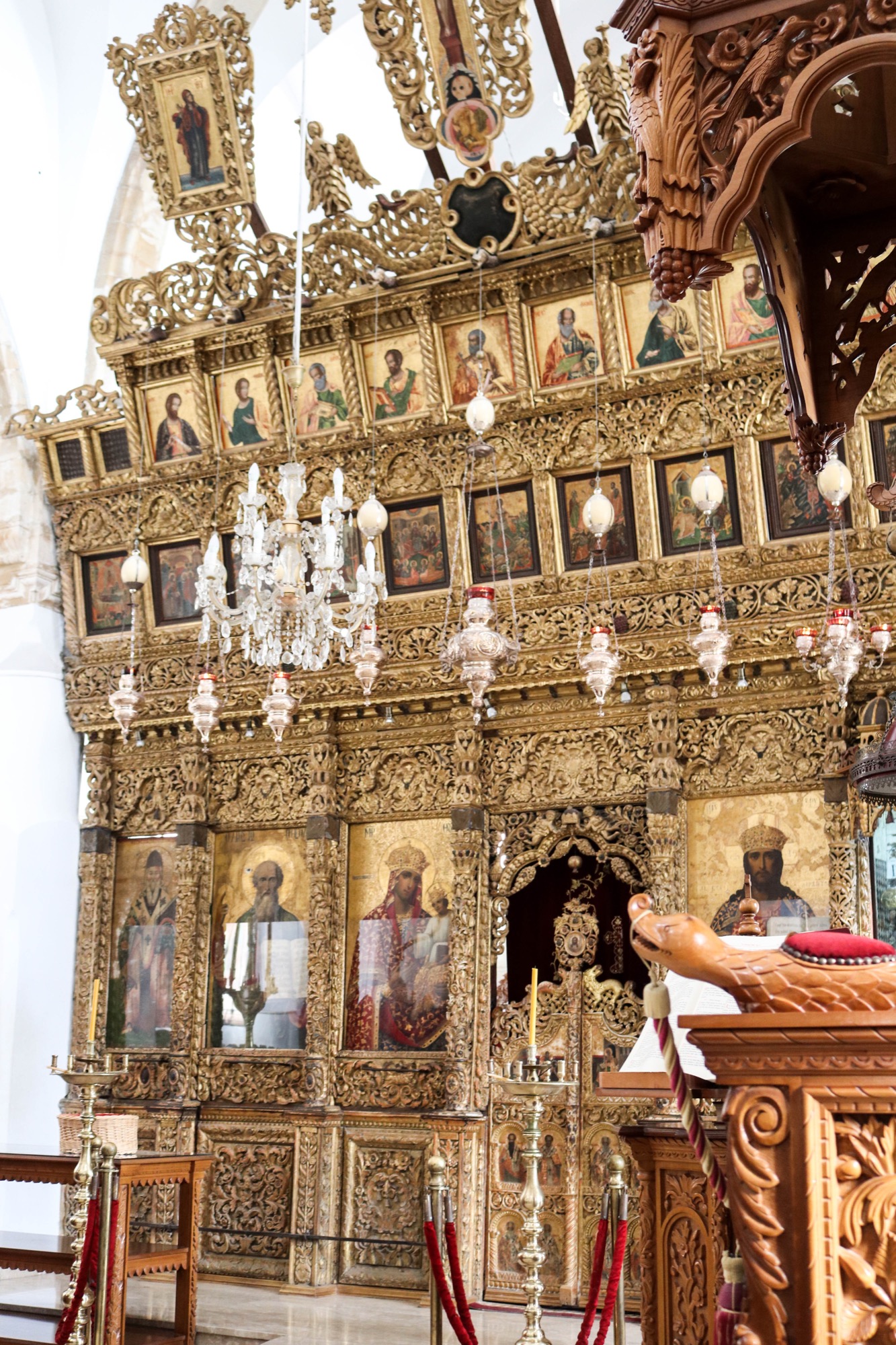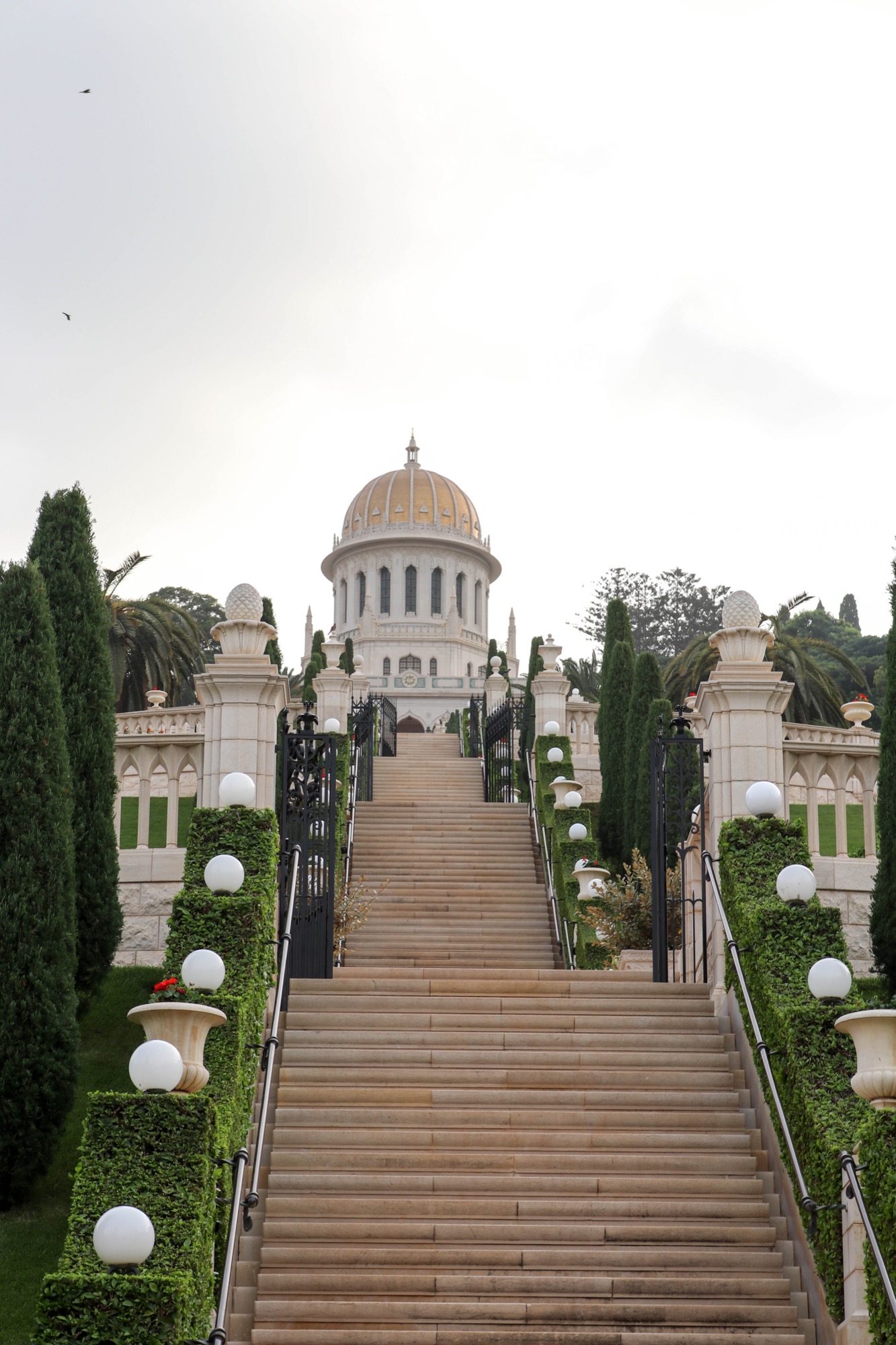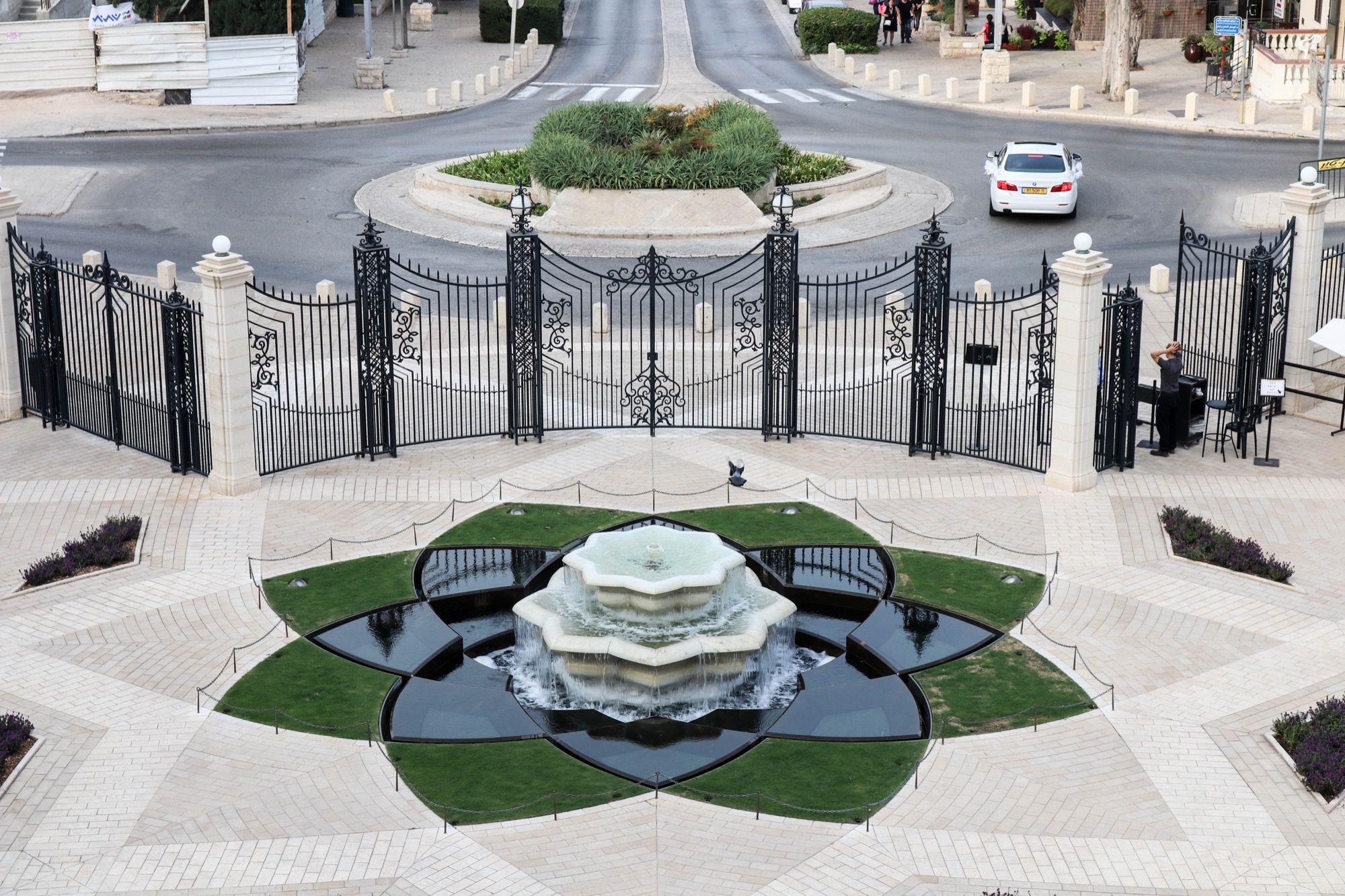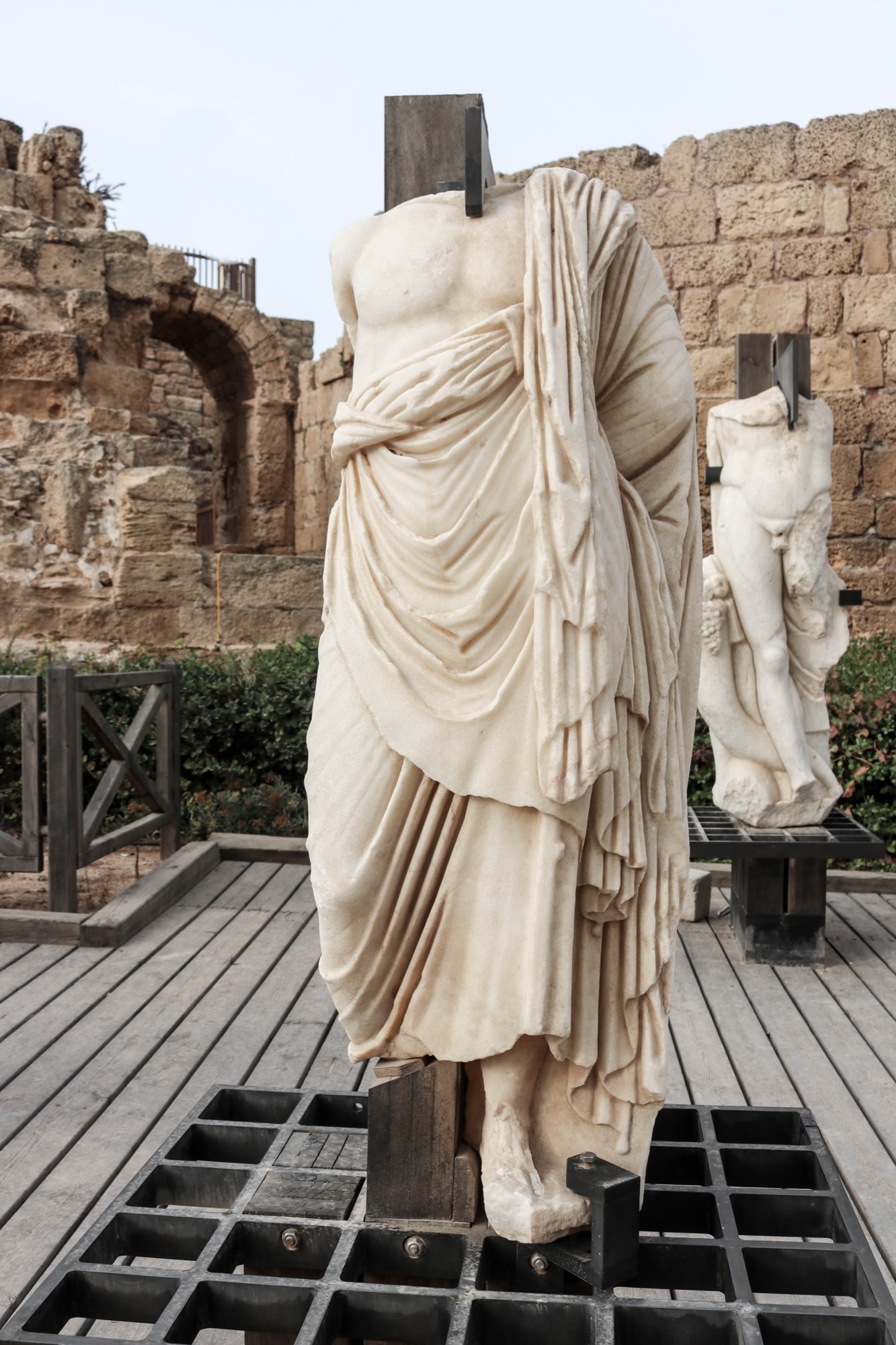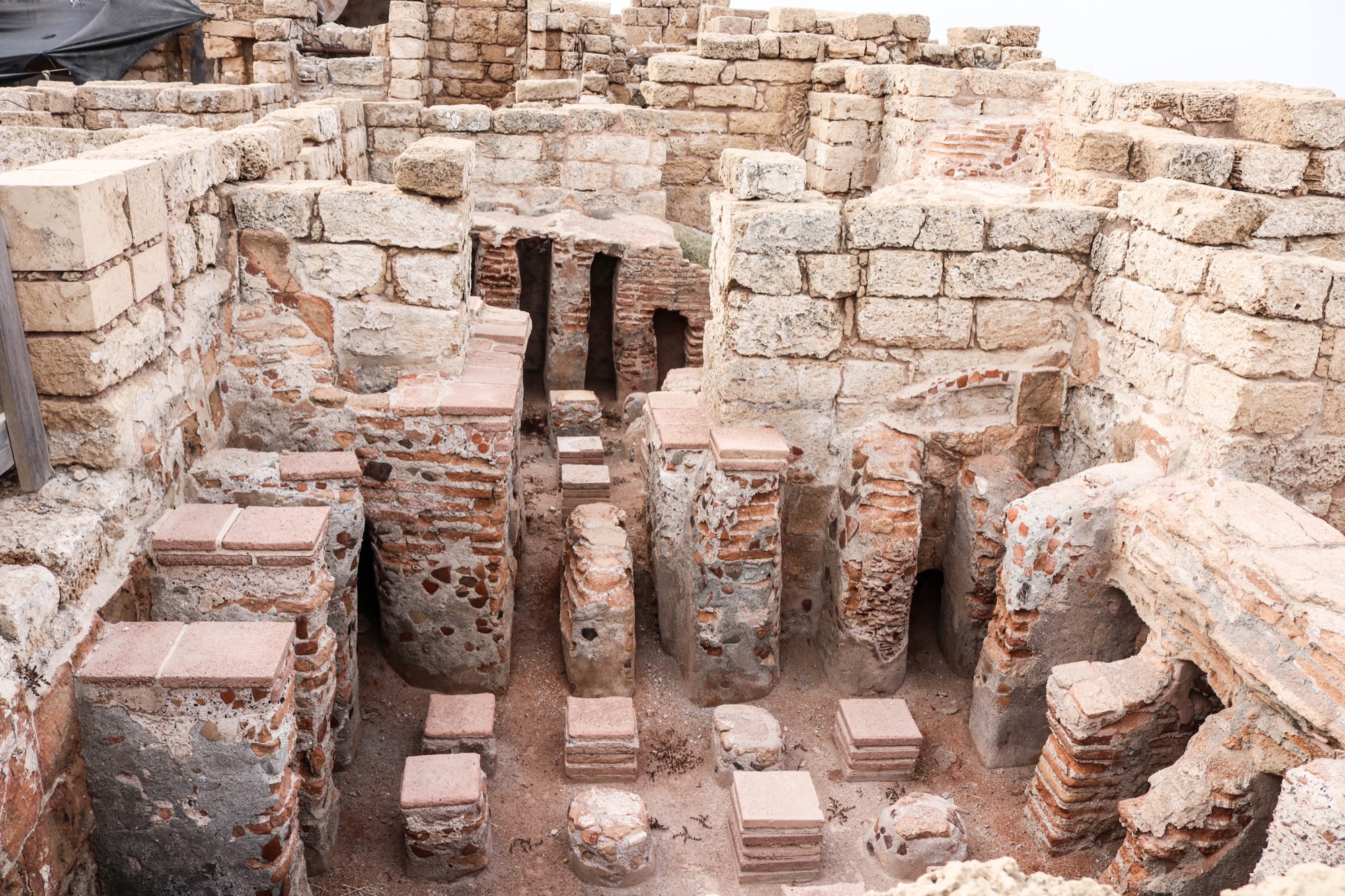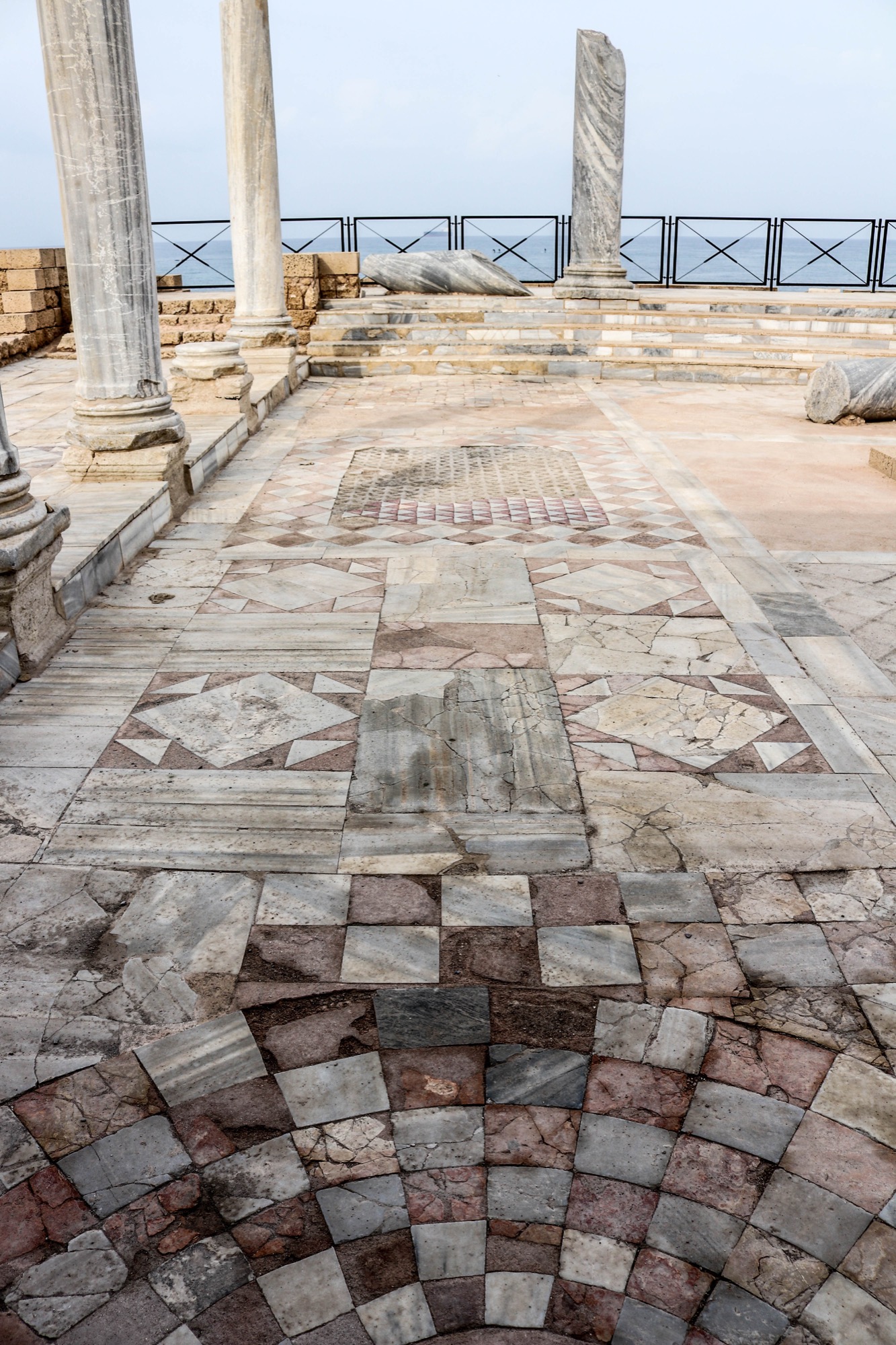The Acropolis at Lindos
The acropolis at Lindos is an ancient citadel with ruins dating back to the fourth century BC, although it has been modified over the years by Greeks, Romans, Knights of Saint John, and the Ottomans.
At the base of the stairway leading to the entrance is the relief of a large trireme, or ancient Greek warship, that dates back to 180 BC.
The current walls and towers, which follow the natural contours of the cliff, are from the Castle of the Knights of Saint John which was built on top of older fortifications in 1317. The circumference of the outer walls is about 1,667 feet.

